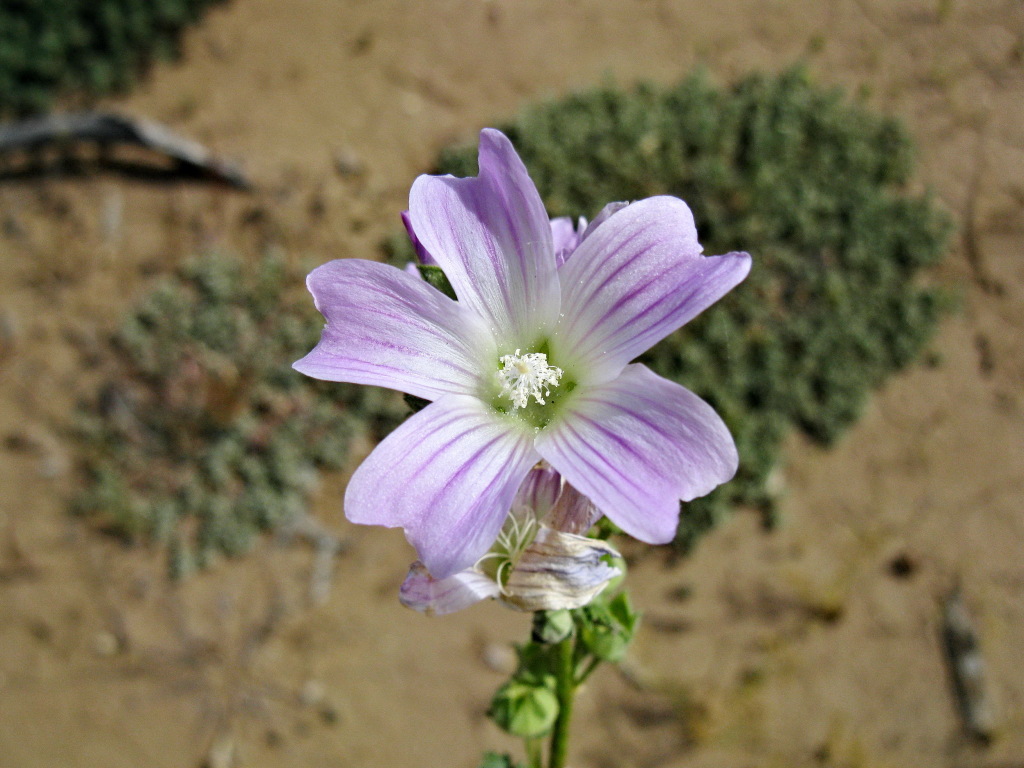Malva weinmanniana
(Besser ex Rchb.) ConranErect, usually short-lived perennial mostly to 1 m, but up to 3 m high. Leaves subentire to palmately 5–9-lobed, the mid-lobe usually longer than others, 1–8 cm long and wide, broadly cordate at base, crenate to dentate, yellow green, moderately to densely stellate tomentose, usually more densely pubescent and paler beneath. Epicalyx lobes ovate, 3–7 mm long at anthesis, not or barely enlarging in fruit; calyx exceeding epicalyx by 3–6 mm at anthesis, enlarging to 12 mm long in fruit, the lobes erect or spreading and not or barely concealing mericarps; epicalyx and calyx stellate-pubescent; petals 15–25 mm long, pale pink or lilac, yellowish basally, with darker veins. Fruit 7–11 mm diam., mericarps usually 12–15, usually dorsally reticulate, glabrous, adjacent margins acute to narrowly winged, usually somewhat toothed. Flowers mainly Aug.–Jan.
LoM, MuM, Wim, GleP, VVP, VRiv, RobP, GipP, WaP, EGL, EGU. Locally common in north-western Victoria under favourable conditions, mostly confined to heavy soils prone to inundation; with isolated eastern occurrences beside the Snowy River near the New South Wales border and near Orbost.
Previous accounts included this species in Lavertia plebia (syn. Malva preissiana). These two species are closely associated, differing principally in flower colour and relative density of hairs on the upper and lower leaf surfaces, with M. weinmanniana being lilac/pink flowered, and generally less hairy on the upper leaf surface relative to the lower surface. Note that the latter character may be hard to interpret when both surfaces of leaves are sparsely hairy.
 Spinning
SpinningBarker, R.M.; Conran, J.G. (2007). Malva preissiana Miq., an overlooked name for Lavatera plebeia Sims (Malvaceae), with a note on variation within the species. . *Journal of the Adelaide Botanic Gardens * 21: 71–72.
Conran, J.G.; Barker, R.M.; Rippey, E. (2012). Malva weinmanniana (Besser ex Rchb.) Conran, a new name for the pink-flowered form of M. preissiana Schltdl. (Malvaceae). Journal of the Adelaide Botanic Gardens 25: 17–25.


